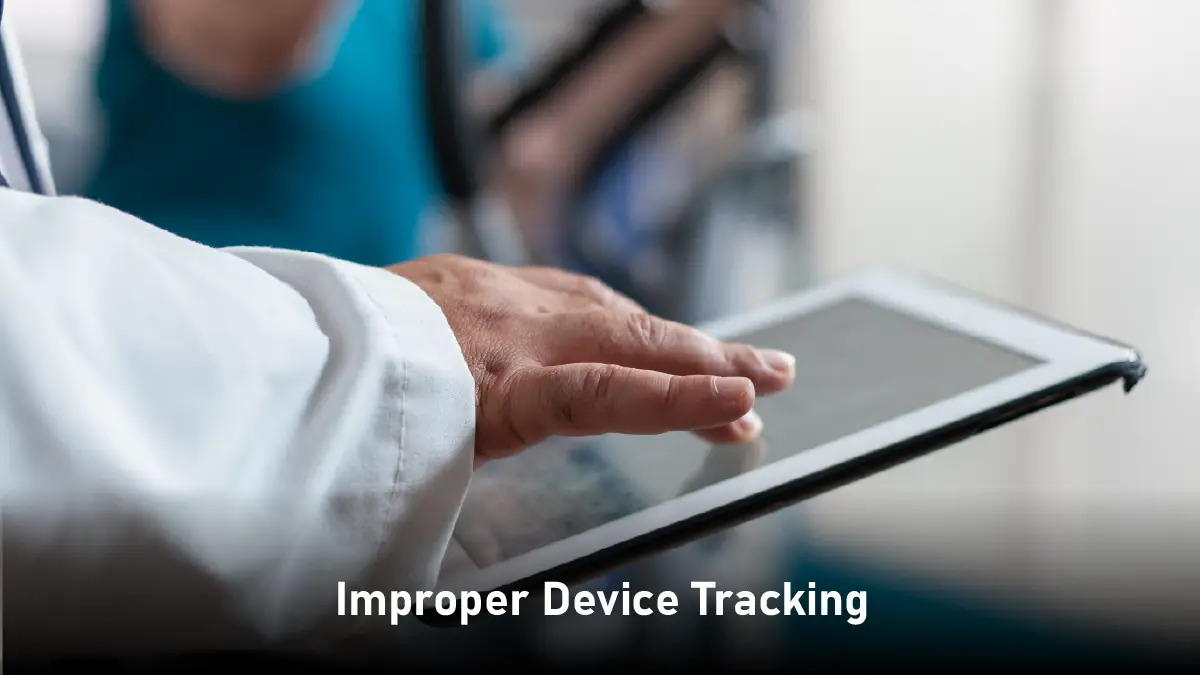Security in cyberspace is a very important issue within healthcare, particularly as more healthcare devices are tied into hospital systems and the web. Heart monitors, insulin pumps, and imaging equipment make treatment safer, faster, and more efficient for patients. But through their connectivity come opportunities for hacking. If cybersecurity gaps in medical devices are not addressed, hospitals risk data breaches, disrupted care, and even patient safety. In this blog, we’ll look at five of the most common cybersecurity problems found in medical devices and share practical steps healthcare organizations can take to fix them.
-
Unencrypted Data Transmission

Many devices send patient information over the network without scrambling it (encryption). Unencrypted data is open to cyberthieves who may intercept, tamper with, or steal information en route. This kind of attack, an MitM attack, can result in severe implications. For instance, if hackers tamper with a patient’s heart monitor information, physicians could make incorrect choices. Beyond patient harm, this also violates patient privacy laws such as HIPAA. According to a 2024 report by Cynerio, over 50% of connected medical devices in hospitals still transmit data without proper encryption, leaving millions of patients at risk.
Also Read: How AI-Powered Agentic Platforms Are Revolutionizing BFSI Operations
How to Fix It?
Implement End-to-End Encryption: All data should be encrypted using robust protocols. Encryption protects data both in transit and at rest.
Regularly Audit Data Flows: Conduct security reviews to ensure that no device is transmitting sensitive data without encryption.
Instruct Personnel: Teach clinical and IT personnel to acknowledge the significance of encrypted messaging and the dangers of unprotected data transfers.
In 2023, Philips released an end-to-end encryption package for its IntelliVue patient monitoring systems, following a vulnerability that had been reported and potentially allowed attackers to seize patient data. The action established a new benchmark for data security for devices.
-
Default Passwords and Weak Login Info
Devices often come with default usernames and passwords such as “admin” or “password123.” Unfortunately, hospitals often forget to change these defaults before connecting devices to their networks. This opens the door to unauthorized access for devices. Hackers can effortlessly uncover default credentials online or crack common passwords. This gives them the golden key to hijack devices, change settings, or snatch sensitive data.
How to Fix It:
Change Default Credentials Immediately: All devices need to have unique, strong passwords before they are connected to the network.
Enforce Strong Authentication: Implement MFA and Role-Based Access Controls (RBAC) to ensure that only authorized personnel can access or modify device settings.
Conduct Regular Password Audits: IT teams should periodically review device credentials and access logs to detect unchanged or weak passwords.
Medtronic, a global leader in medical technology announced that all new devices will require password changes upon installation and will support multi-factor authentication (MFA) by default. This follows the FDA warning about insulin pump vulnerabilities tied to default credentials.
-
Lack of Regular Software Updates
Many medical devices run on outdated software that hasn’t been updated with security fixes. Some devices are even too old to update. Cyber attackers use such loopholes to control devices or access sensitive data.
How to Fix It:
Establish a Robust Process: Create a plan to update all devices regularly.
Collaborate with Vendors: Work closely with device manufacturers to get security patches quickly.
Monitor for Vulnerabilities: Scan devices often to find and fix vulnerabilities.
-
Poor Network Security
Medical devices are often on the same network as other hospital computers. If a hacker breaks into one device, they can move easily to others. Thus, a virus on a hospital’s general network could spread to critical devices like ventilators.
How to Fix It:
Network Segmentation: Separate medical devices from general IT networks to contain potential breaches.
Secure Wireless Connections: Use strong encryption for wireless connections.
Continuous Monitoring: Monitor networks to spot and stop suspicious activity fast.
-
Improper Device Tracking

Hospitals do not usually have efficient systems to monitor medical devices. This often occurs when equipment moves from one department or facility to another. This facilitates it for hackers to alter or steal devices easily. Therefore, stolen or lost devices can result in data breaches or harm to patients.
How to Fix It:
Implement Real-time Tracking: Use tracking systems to know where every device is in real time.
Automate Inventory Checks: Regularly check device inventories to identify missing or unaccounted-for equipment.
Schedule Preventive Maintenance: Keep devices updated and maintained no matter where they are.
Additional Gaps Worth Addressing
While the above five gaps are among the most common, healthcare organizations should also be aware of:
Vendor and Supply Chain Risks: Third-party vendors can introduce vulnerabilities. Check your suppliers and vendors carefully for security risks.
Inadequate Incident Response: Without a robust plan, breaches can escalate quickly. Have a clear plan for responding to security incidents.
Best Practices for Healthcare Organizations
- Think About Security from the Start – Make sure security is part of every step, from buying and setting up devices to using and retiring them. Check for risks early.
- Handle Safety and Security Independently – Have distinct teams or strategies for patient safety and for safeguarding from hackers, but ensure they complement each other.
- Train Staff Regularly – Educate employees about emerging threats, safe usage of devices, and what to do in case of an issue.
- Be Law-Abiding – Keep lists of regulations and laws that have been enacted, such as FDA and HIPAA. Keeping abreast with the rules helps keep patients safe and establishes trust.
Case Studies
Case Study 1: Ransomware Attack on a U.S. Hospital Network
In 2023, a big U.S. hospital system got hit by ransomware. It spread through outdated software and poor network segmentation. Key medical devices like infusion pumps and monitors went offline. This affected patient care and could risk privacy violations. The hospital responded by breaking up device networks. They put regular software updates in place, reset default passwords, and boosted staff cybersecurity training. These steps helped restore operations and significantly reduced future risks. These steps helped restore operations and significantly reduced future risks.
Case Study 2: European Hospital Secures Device Data with Encryption
A top European hospital found that many medical device data were sent without encryption. This put patient information at risk. The hospital made several upgrades after an internal audit. They switched to devices with end-to-end encryption, including Philips IntelliVue monitors. They also started regular security audits and trained staff on data privacy. These changes cut the risk of data breaches. They also improved compliance with privacy rules. This boosted patient trust and safety.
Conclusion
Medical devices save lives, but they need to be secure. The more connected we become, the more vulnerable we are to cyberattacks. Cybersecurity vulnerabilities are remediable. Some of the most common ones are unguarded data, default passwords, unpatched software, weak network defenses, and lacking device tracking. We can harden our defenses with newer technology, strong protocols, and extensive training. Preventing these common issues protects patients and keeps the hospital operational. Healthcare organizations that take action now will be safer and more patient-trusted.
Remember: Cybersecurity is merely about adopting technology to avoid fraudulent practices – it’s about protecting individuals. These steps will help healthcare professionals protect patients in a connected world.




